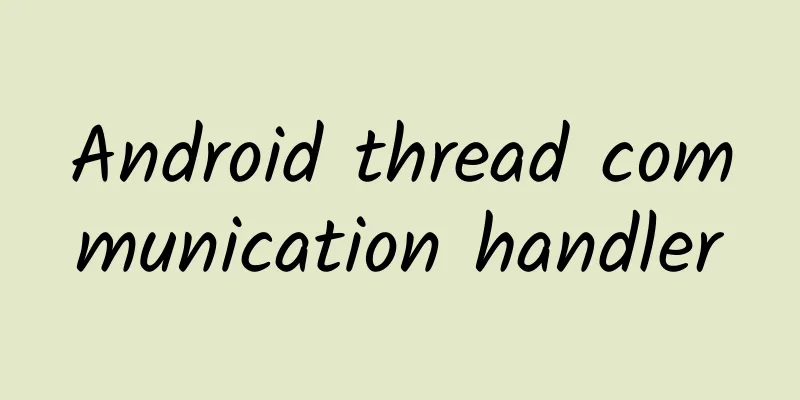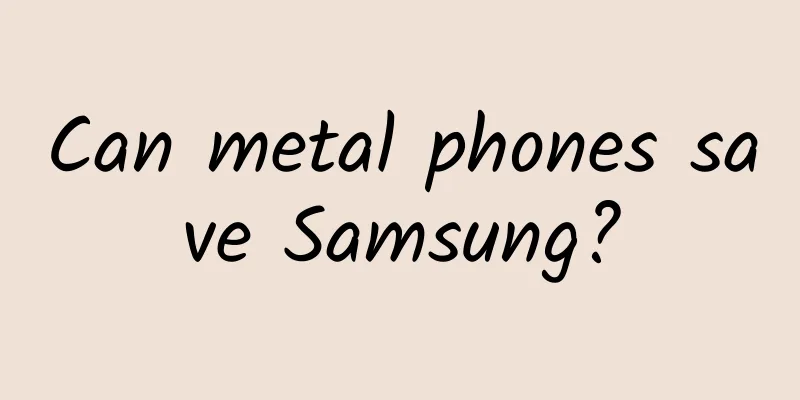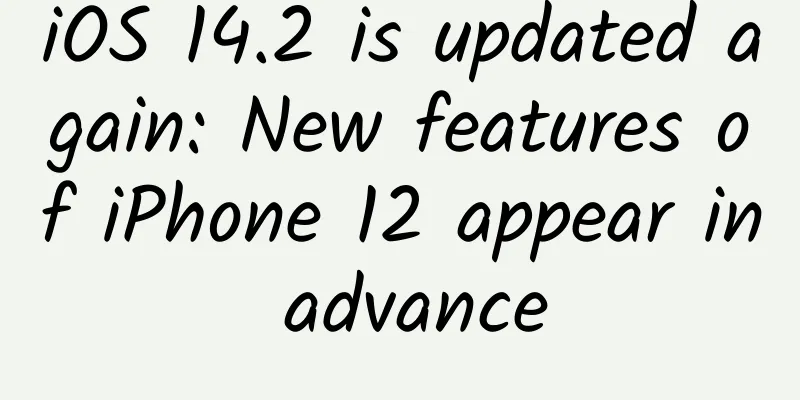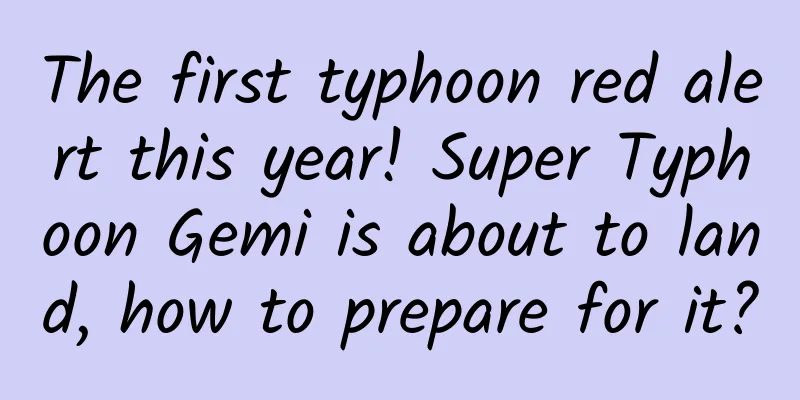Android thread communication handler

|
This article discusses the Android handler mechanism. I believe that those who have written Android must be very familiar with handlers. Because they are used so frequently. Especially when you want to refresh UI controls in non-UI threads. Because UI controls can only be refreshed in the main thread, but we may need to update the UI in non-UI threads. For example, if a background thread downloads a picture and needs to update it to the UI, the main thread handler is needed to send an update message. Handlers are used so frequently that it is necessary for us to know how they work internally.
One sentence summary What work can the combination of handler, looper, and message do? Simply put, in one sentence: in one thread, specify to execute a task in another thread. handler thread What is a handler thread? When a thread creates a looper, which has a message queue and creates a handler, then this thread is a handler thread. The function of the handler thread is to let other threads specify the handler thread to perform a task. For example, the UI thread is a handler thread. We can specify the UI thread to update the UI in a normal thread. handler The handler has two jobs: one is to send tasks or messages; the other is to process messages or execute tasks. What to send What can a handler send? The handler and the message queue are closely related. Intuitively, the handler will send messages to the message queue. In fact, it is not only that, the handler can send both messages and runnbales. In other words, the message queue is not only a queue for messages (actually a single linked list), but also can hold runnables. Triggered thread The handler sends messages or tasks, usually in other threads, that is, the thread where the message is sent is not the thread that creates the handler (of course, you can also send messages in the thread that creates the handler, which is equivalent to sending messages to yourself). The handler processes messages or performs tasks in its own thread. Creating a handler Handlers and loopers are not unique to UI threads. Any ordinary thread can create its own looper and handler. But one thing to note is that before creating a handler, you must first create a looper. If you don't create a looper, just create a new handler, for example
When running, an error will be reported directly:
Let's take a look at the handler's constructor
The handler sends the message to the message queue, so when constructing a handler, you must know the message queue to determine where to send the message. The message queue is managed by the looper, so in order, the looper must be created before the handler can be created. Create a thread's Looper,
So, the correct way to create a handler is:
Some students may find it strange that when using new Handler(), it can be used without calling Looper.prepare() first? That is because the handler is created in the main thread.
When the main thread starts, it will call Looper.prepareMainLooper() to create a looper, so we can create a handler directly in the main thread without manually creating a looper first. Runnable Encapsulation You may find it strange that the message queue should contain messages, so where did the runnable go in handler.post(runnable)? The runnable is actually also sent to the message queue, but the runnable is encapsulated before sending.
Use getPostMessage to wrap the runnable into a message, and the callback of the message is the runnable. Therefore, to determine whether a message is a runnable, you only need to see whether the callback of the message is empty. If it is empty, it is a normal message, otherwise, it is a runnable. How to process messages Look at dispathMessage
According to the type of message sent by the handler, there are two cases:
As mentioned earlier, message.callback is actually a wrapper around runnable, so if the handler sends a runnable to the message queue, the runnable will be executed. If the handler sends a message to the message queue, it can be divided into two cases:
If a callback is set, the message will be processed by the callback first. If callback returns true, it means the processing is complete and will not be passed to handler.handleMessage. If callback returns false, it means the processing is not complete, and the message will be passed to handler.handleMessage for further processing. If callback is not set, the message will be passed directly to handler.handleMessage for processing. message How to generate messages How messages are generated Messages can be generated by constructors. More often, they are directly obtained from the recyclable message object pool to improve performance. The way to obtain a message from the message object pool is Message.obtain(), or Handler.obtainMessage(). In addition, you can send messages without generating them. What does it mean? handler.sendEmptyMessage() can send an empty message to the message queue without constructing a message object. Sending time When is the message sent? The timing of message processing is still determined by the handler (it feels like the handler has too many controls ==). handler.sendMessage puts the message at the end of the message queue, and the looper takes messages one by one from the front to the back. handler.sendMessageAtFrontOfQueue puts the message at the head of the message queue, and the message can be processed immediately. handler.sendMessageAtTime does not send the message to the message queue immediately, but sends it at a specified time. handler.sendMessageDelayed does not send the message to the message queue immediately, but sends it after a specified delay. Looper Creating a looper As mentioned earlier, the looper is like a transmitter, which takes messages from the message queue and dispatches them to the handler for processing. Therefore, to know which handler the message should be sent to, you must first create a looper. How to create a looper
Dispatching Messages Through looper.loop(), the looper will continuously take messages from the message queue and send them out. How does the looper know which handler the message should be sent to? Let's take a look at the loop method
Each msg has a target attribute, which is the handler that sends the message. Dispatching a message means dispatching it to the msg.target object. The loop method is not an infinite loop. Once the message queue is empty, it will end to avoid occupying CPU resources for a long time. example In the figure below, thread A is a handler thread. Now thread B wants thread A to process a message 5. Therefore, thread B gets the handler reference of thread A and calls sendMessage of the handler. Message 5 is sent to thread A's message queue. How does thread A process this message? Using the looper.loop method, it will take out a message from the message queue each time. When message 5 is taken, it means that message 5 is about to be processed. The actual message processing logic is customized in the handler's handleMessage (or runnable, callback, here handleMessage is used as an example). The looper gets message 5, knows the target handler through the target attribute of message 5, and then sends the message to the handler for processing. Summarize A handler does not exist independently. A handler must have a dedicated thread, a message queue, and a looper associated with it. How do these roles work together? It can be simply summarized into the following four steps:
The relationship between handler and looper is somewhat similar to that between producer and consumer. The handler is the producer, producing messages and adding them to the message queue; the looper is the consumer, taking messages from the message queue. |
>>: Tech Neo July Issue: Technology Entrepreneurship
Recommend
The future of interaction! 5 ways to help you design easy-to-use touch gestures
We live in a world where people interact with mac...
What should we pay attention to when placing the Wenchang Tower?
1. Introduction to Wenchang Tower Wenchang Pagoda...
Short video shooting: 3 tips to teach you how to shoot high-quality short videos with your mobile phone!
Picking up the phone to watch short videos when n...
The collision between the prophet and the pioneer: Kevin Kelly's trend interpretation coincides with Suning's transformation practice
Who says the future is unpredictable? As early as...
Ibuprofen has become very popular recently. Do you know its origin?
In the fight against the COVID-19 pandemic, ibupr...
Geckos' superpower of "regenerating severed limbs" inspires human "regenerative medicine"
Do you still remember the little gecko who lost h...
Musk participates in "saving the earth"! NASA launches the first planetary defense test mission
66 million years ago, an asteroid about 10 kilome...
5 Steps to Social Media Operation in 2020
In order to understand how to operate a valuable ...
2020 Omnichannel Online Marketing Report!
Today I would like to share with you how to digit...
Tik Tok operation planning program for real estate industry!
1. Industry Background As we all know, in the tra...
The success of Jiang Xiaobai’s marketing does not only rely on copywriting!
Friends who work in operations and write copy sho...
The most comprehensive car buying guide in history, helping you avoid pitfalls and save money
The most comprehensive guide to buying a car in h...
8 years of Double 11: What else can we see besides pessimism and doubt?
120.7 billion, a year-on-year increase of 32.3%. ...
What are the functions of elderly care mini program development? How much does it cost to make a mini program?
At present, the elderly population in my country ...
Cocos Autumn Developer Conference convenes industry leaders to discuss mobile game trends
According to the news from Shangfang.com on Octob...









